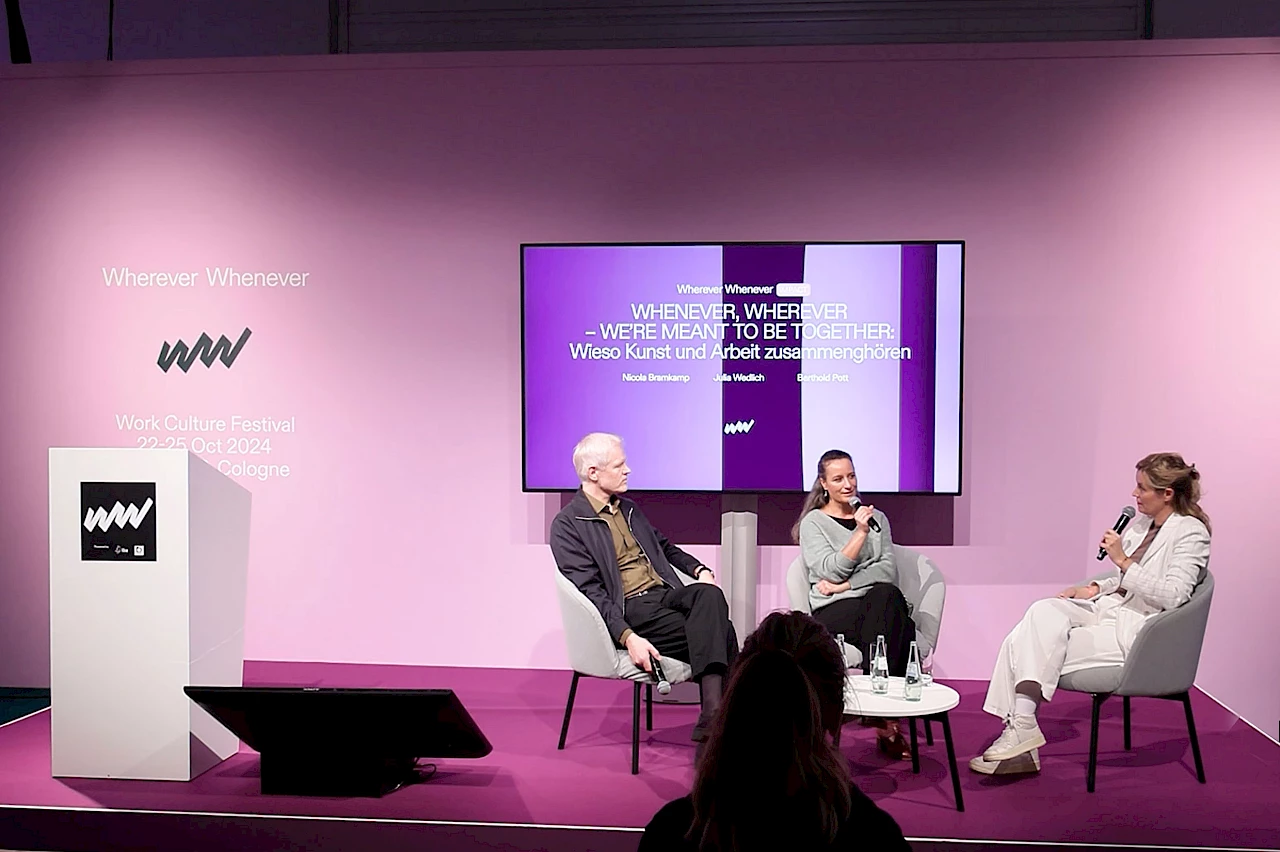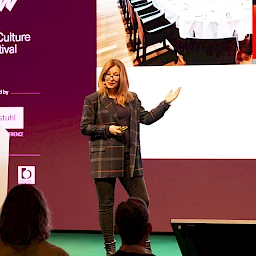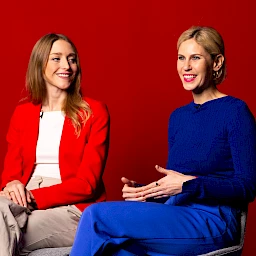To what extent can art change the workplace? And what happens when art meets corporate reality? At the Work Culture Festival, theatre producer Nicola Bramkamp was joined by gallery owner Berthold Pott and Julia Wedlich, art curator at Kienbaum Consultants International, to discuss the interaction between art and the world of work. Their joint conclusion was that art is much more than decoration—it is a catalyst for creativity, encounters, and transformation processes in organisations.
Right at the beginning, Bramkamp made it clear how important it is to understand art not just as a “beautiful accessory”, but as an independent force in the changing world of work. “Art creates a change of perspective and thus new spaces for thought. It can be a source of inspiration—for individuals and for entire organisations.”
Art as a bridge between people and ideas
Julia Wedlich, who has been helping to shape the art strategy at Kienbaum for many years, talked about the idea of not just hanging art in reception areas or offices, but actively integrating it into everyday working life. “For us, art is a means of communication. It gets people talking, creates identification and shows that there is room for other points of view.” It’s not essential that everyone likes all the works. It is essential that art triggers conversations and encourages employees to contribute their own perspectives. Berthold Pott, gallery owner and member of the New Art Dealers Alliance (NADA), confirmed this assessment from his own experience. “Entrepreneurs and artists often have more in common than you might think,” he said. “Both are visionary, willing to take risks and driven by ideas. When these worlds meet, they generate a dialogue that goes far beyond aesthetic questions.”
From the wall into the company: interaction instead of decoration
During the discussion it became clear that art in the workplace does not have to be limited to pictures on a wall. Interactive formats such as artist talks, studio visits or performative interventions can provide new momentum, both for the corporate culture and for individual learning processes. Wedlich reported on an artist’s book project at Kienbaum, which was not only passed on as a customer gift, but also caused intensive in-house discussions. Guided tours through changing exhibitions in the offices or encounters with artists during lunch breaks also broaden horizons and bring people together in unusual constellations. Such encounters enable not only exchange, but also friction—and this is precisely where their value lies. When art finds its way into organisations, it challenges routines, opens up mental horizons, and creates space for new perspectives. Bramkamp gave a real-life example: At the suggestion of an artists’ collective, Swiss entrepreneur Hans-Dietrich Reckhaus questioned his entire business model and transformed his insect control company into a pioneer for biodiversity. “Such inspiration doesn’t come from standard situations—it comes from art,” said Bramkamp.
Art creates space, including for dissent
Last but not least, the panel participants also talked about the impact of art as a topic of social debate. “We have found that even abstract works of art trigger discussions,” said Wedlich. “This shows that alone the decision to present art means opening up and thus being vulnerable.” Bramkamp emphasised how valuable this space for ambivalence is: “When companies permit art, they also tolerate a situation in which not everything can be planned. Something is allowed to irritate. And that’s exactly where transformation begins. Because where dissent is possible, an opportunity arises for real debate, beyond the need for harmony and consensus logic. Art creates precisely such spaces. Places where not everything has to please, where uncertainty becomes bearable and new perspectives can emerge. It is precisely this openness that holds the potential for a vibrant corporate culture. “Art makes visible what otherwise remains unspoken, not only in a social but also in a business context.” The participants agreed that dialogue often begins where there is irritation. Those who not only allow this friction, but specifically encourage it, also promote creativity, reflection and a willingness to change. Art thus becomes a medium of discourse and a resonance space for attitude.
Art is effective—even without KPIs
Even if studies show that art increases employee satisfaction or can reduce sick days, the panel was unanimous that the real effect of art often eludes quantitative standards. “Not everything that works can be measured,” says Bramkamp. “Some changes can be seen in conversations, in the climate, in the attitude.” Art cannot be reduced to key performance indicators—and it doesn’t have to be. Rather, it creates atmospheres, opens up spaces for thought and action and enables experiences beyond the rational. The panel of experts also agreed that art in the workplace needs an attitude and the support of company management. “Without genuine interest, without openness, art becomes mere decoration,” said Pott. “But if the management goes along with this, it can lead to a real cultural change.”
The panel ended with a clear message: If you want to unleash creative potential, you also need to create new spaces—both mentally and physically. Art can be a bridge, an amplifier, a catalyst. And sometimes just the offer of a discussion. According to Julia Wedlich, this is because “If art gets people talking to each other, it has already achieved a lot.”
Nicola Bramkamp studied theatre arts, German literature and business administration and has worked as a dramaturge, theatre and festival producer, and, most recently, as director of drama at Theater Bonn. In 2018, she founded the SAVE THE WORLD initiative, which brings together experts from science, business and culture to creatively present future global questions. Using innovative formats at the intersection of art, science and society, she provides inspiration for topics such as sustainability, diversity and transformation. As a consultant, speaker and moderator, she regularly attends conferences and cultural events in Germany and abroad. Further information is available at: www.savetheworld.de.
Julia Wedlich is art historian and curator at Kienbaum Consultants International. She has helped shape the company’s art strategy for many years and regularly brings contemporary art into the company’s everyday life—through exhibitions, artist talks and mediation formats at all German locations. Her objective is to make art visible and tangible as a means of prompting dialogue, a change of perspective and cultural openness in the working environment. Further information is available at: https://www.linkedin.com/in/julia-wedlich-68819326a/.
Berthold Pott is a gallery owner based in Cologne and a member of the New Art Dealers Alliance (NADA). In his gallery, he represents international positions of contemporary art and is committed to the dialogue between art and society. With his experience, he regularly brings artists into conversation with companies and is convinced that art not only inspires, but can also initiate change. Further information is available at: https://bertholdpott.com/.
Cover photo: © IBA






